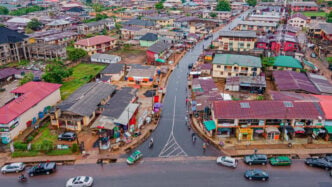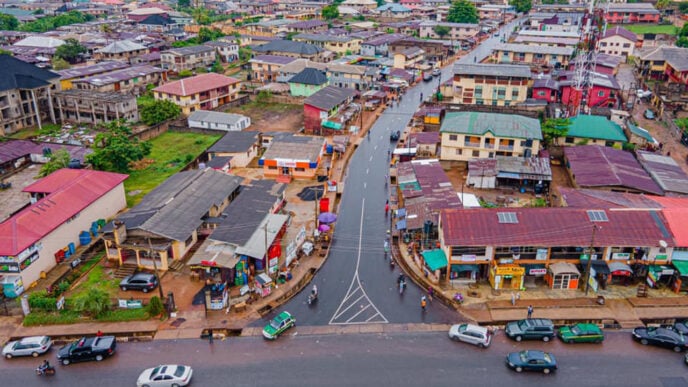File photo of Nigerian troops
BY LEKAN OLAYIWOLA
In the evolving war against insecurity, the most consequential battleground may be the imagination of the Nigerian state itself. How the government perceives its geography, how it assigns strategic value to different regions, and how it frames threats within its national narrative all shape the architecture of its counterinsurgency strategy.
The architecture appears fractured conceptually rather than operationally. The term “tokenisation” captures this fracture with unsettling precision. It describes a pattern in which certain regions are granted full-spectrum security attention, while others are treated as peripheral, symbolic, or politically inconvenient.
Beyond uneven troop deployments or budget allocations, symbolic weight is assigned to different zones. The north-east is imagined as an existential threat, the north-west as a humanitarian emergency, the south-south as an economic engine, and the south-east as a political irritant.
Advertisement
These frames not only shape policy, determine urgency, and influence public empathy, but they are also reductive.
Nigeria’s Geography of Strategic Imagination
In the north-east, Nigeria has built a dense security ecosystem in response to Boko Haram and ISWAP. Air platforms, joint task forces, community vigilantes, and deradicalisation programmes form a multi-layered response. The region is treated as a national priority, and rightly so.
Advertisement
In the north-west, banditry and mass kidnappings have triggered armoured deployments, federal reinforcements, and the creation of new battalions. Response here is framed as humanitarian and developmental, with a focus on restoring order and rebuilding trust.
In the south-south, the response is laser-focused on oil infrastructure. Naval patrols, vessel seizures, and site demolitions are common. Yet the emphasis is on protecting economic assets rather than civilian safety or community resilience. The region is imagined as a revenue stream, not a civic space.
The south-east receives no coherent counterinsurgency framework despite rising violence from unknown gunmen, separatist militias, and cult groups. There are no strategic task forces, no integrated intelligence grids, and no sustained civic engagement programs. Instead, the south-east is met with episodic raids and rhetorical condemnation.
This unevenness undermines the Whole-of-Government, Whole-of-Nation, Whole-of-Society approach that modern security doctrine demands. Without a unified vision, intelligence remains siloed, civilian trust erodes, and threats metastasise across borders and identities.
Advertisement
Militias migrate, alliances form, and violence spreads in ways that no single agency can contain. The state’s fragmented imagination becomes a liability, not just in policy but in practice.
From Containment to Cohesion
Nigeria’s counterinsurgency strategy must evolve from containment to cohesion. This requires a strategic reimagination, not just tactical adjustments. A unified vision begins with the recognition that every region is a stakeholder in peace. No zone should be tokenised. No community should be scapegoated. No threat should be dismissed because it is politically inconvenient.
This vision must be built on integration. Intelligence must flow across regions and agencies. Security planning must reflect the complexity of threats, not just their geography. A cult group in Anambra may share tactics with bandits in Zamfara. A gunrunner in Bayelsa may supply insurgents in Borno. These connections are invisible to a siloed system.
Advertisement
Civic engagement must be central, not peripheral. Communities must be co-authors of peace, not passive recipients of security. Youth networks, religious leaders, traditional rulers, and civil society organisations must be embedded in planning and execution. Their knowledge, legitimacy, and networks are irreplaceable. Without them, counterinsurgency becomes a blunt instrument.
Narrative recalibration is also essential. The south-east must be reframed not as a political inconvenience, but as a region with legitimate grievances and strategic importance. Language matters. So does empathy.
Advertisement
When a region is consistently described in terms of threat and deviance, it shapes public perception and policy response. Reframing the Southeast as a civic partner rather than a political problem is strategic.
Towards a Glocalised Strategy
Advertisement
Other nations have faced similar dilemmas and offer instructive lessons. In Colombia, the shift from military dominance to civic engagement helped reintegrate ex-combatants through education, employment, and community reconciliation. The state recognised that peace could not be imposed; it had to be co-created.
In Kenya, intelligence fusion centres and community policing helped pre-empt terrorist plots by embedding local actors into the national strategy. The result was not just better intelligence, but deeper trust.
Advertisement
Afghanistan’s failure to integrate tribal leaders and civil society into counterinsurgency planning proved fatal. Military gains were reversed because the civic foundations of peace were never built.
The Architecture of Inclusion
A unified counterinsurgency strategy requires an architecture of inclusion. This means building cross-regional task forces that can respond to threats that transcend geography. It means creating civic engagement hubs that empower communities to shape security outcomes.
It means investing in socioeconomic interventions that address the root causes of violence: poverty, exclusion, and hopelessness. It also means dignified reintegration. Programmes like Operation Safe Corridor must be expanded and reimagined. Reintegration cannot be limited to ex-combatants; it must include host communities.
Stigma must be addressed. Livelihoods must be restored. Trust must be rebuilt. Reintegration must go beyond removing fighters from the battlefield to restoring citizens to the republic.
De-securitising all Regions Matter
Tokenisation of national security by region tells some Nigerians they are threats, others that they are assets, and some that they are a nuisance. Integration tells every Nigerian: you are part of the solution. You belong. You matter.
The question is not whether Nigeria can afford this shift. The consequences of fragmentation are already dangerous. Violence spreads. Trust erodes. The republic frays.
De-securitisation will not be easy. It will require political courage, institutional reform, and civic partnership. But it is possible. And it is necessary.
Security is not just about boots on the ground. It is about the stories we tell ourselves about who we are. Nigeria must tell a new story—one of inclusion, dignity, and co-created peace. That is the imagination that secures; the vision that endures.
Lekan Olayiwola is a peace & conflict researcher/policy analyst. He can be contacted via [email protected]
Views expressed by contributors are strictly personal and not of TheCable.












